I have always been a little fascinated by London Bridge. I first knew about it when I was very young and I had won a music record as a prize through school (although this was in the mid-1980s and cassette tapes were available, records were still in use) with children's songs on it. One of the songs on the record was "London Bridge is Falling Down". It was a little catchy tune, and the song has quite a lot of history as it was a children's playing game going back centuries.
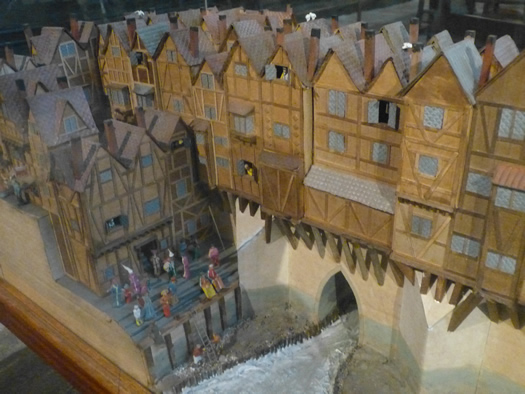
For a long time, London Bridge was the only bridge across the river Thames. The old bridge was built in 1176, but short-term wooden bridges were in place at various times until its construction. To cross the river, many used boat services to take them from one side to the other. The water traffic would have been far greater and congested then than it is today. In those days, London Bridge would have also been very busy and required tolls to cross. In addition, the bridge had buildings built upon it on both sides. The below image of an engraving shows what London Bridge looked like in 1616, and criminals' or traitors' heads were placed on spikes on the gatehouse on the bridge as a warning. These can be seen in the below engraving.

The current London Bridge is actually a modern construction built next to the old London Bridge. The old bridge was torn down in 1831, and its location was originally next to the church St. Magnus-the-Martyr. Those entering or leaving the city of London did so directly past this church. A blue plaque commemorates this. Can you imagine this fairly quiet area being bustling with so many people entering and leaving the city?
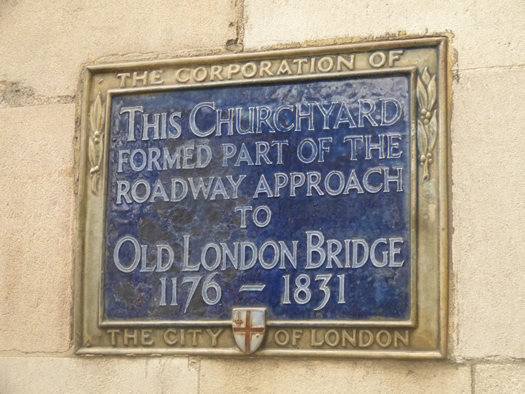
St. Magnus-the-Martyr was destroyed in the Great Fire of 1666, but it was rebuilt by Christopher Wren. The courtyard of the church contains some relics worth noting. One is a piece of weathered wood from a Roman dock. The other is stonework from the old London Bridge.

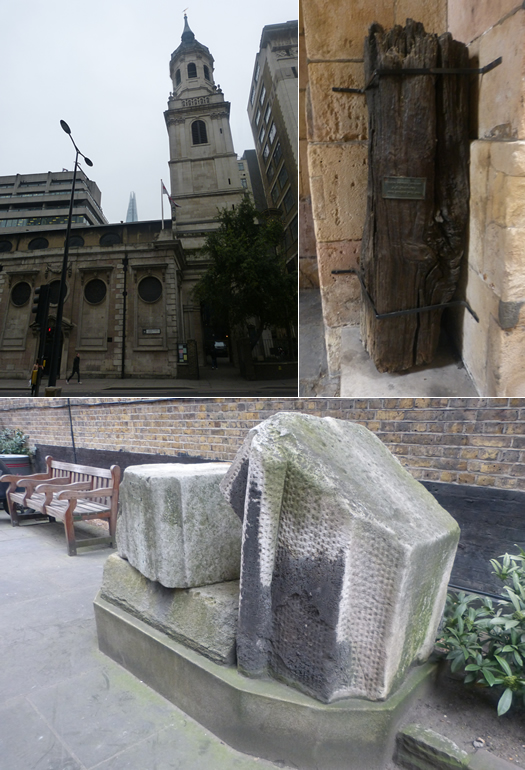
The church interior is worth a visit, and it also has a couple of interesting finds, such as four shelves near the door that contain loaves of bread. In old days, the bread was meant to be distributed to the poor after Sunday's service.
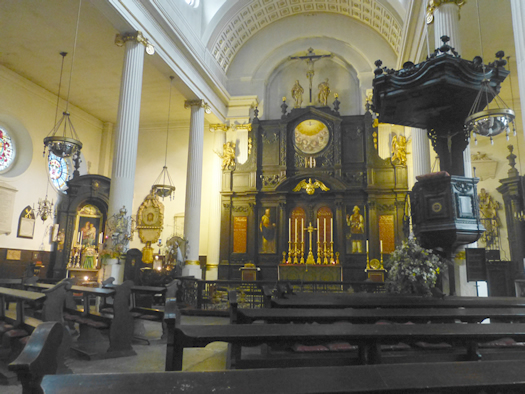
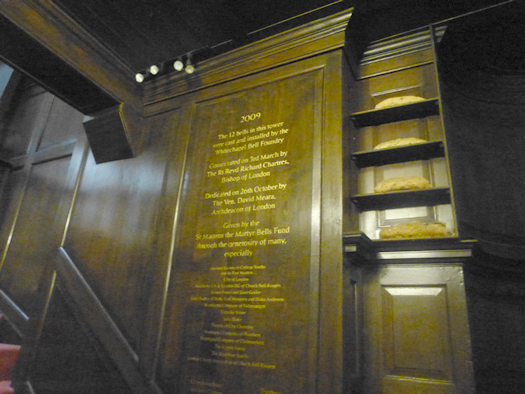
Also inside St. Magnus-the-Martyr is a four-metre wide model of the original London Bridge in its heyday in about 1400. It was created by liveryman David T. Aggett and donated by the Worshipful Company of Plumbers in 1987.
I paid the church a visit to see the model of London bridge on a Thursday during a late lunch break. The church is normally open Tuesday-Friday in the afternoon. The website for St. Magnus-the-Martyr will contain more information about its visiting hours. The website is http://www.stmagnusmartyr.org.uk.
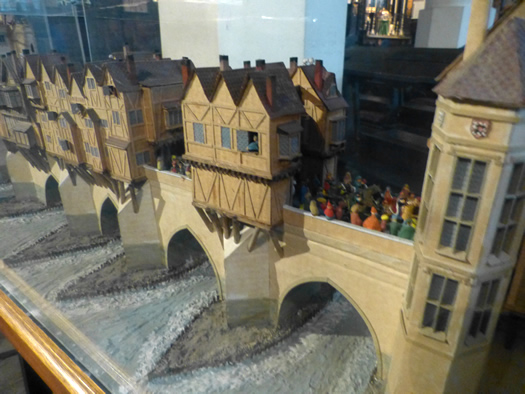
The model shows the buildings on the bridge and figures. Henry VIII can be seen entering the south side of the bridge, and apparantly, a modern-day policeman can be seen amongst the figures.
King Henry II commissioned the stone bridge that would become the London Bridge in the model. The bridge was built up with several buildings and a chapel, known as St. Thomas-on-the-Bridge, and this chapel was frequented by those going on pilgrimages to Canterbury. The chapel was the starting point for the pilgrimages. The bridge took 33 years to complete, and although plots were sold on the bridge for shops and homes, this wasn't enough to recoup the cost of building, so "The Brethern of the Bridge" imposed tolls.
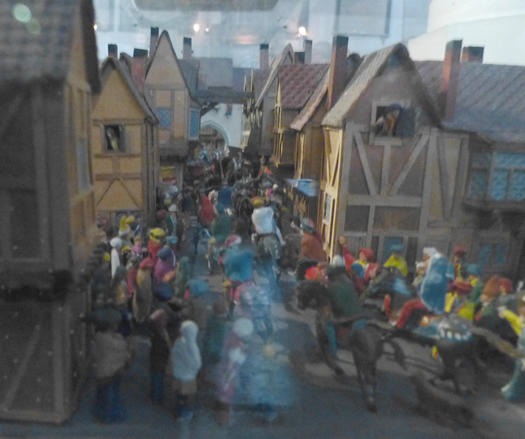
The bridge was 26 feet wide and 800-900 feet long. It had a drawbridge to allow tall ships to pass and a gatehouse on both ends. In the mid-1300s, it had 138 shops. Public latrines hung over the bridge to empty waste into the river.
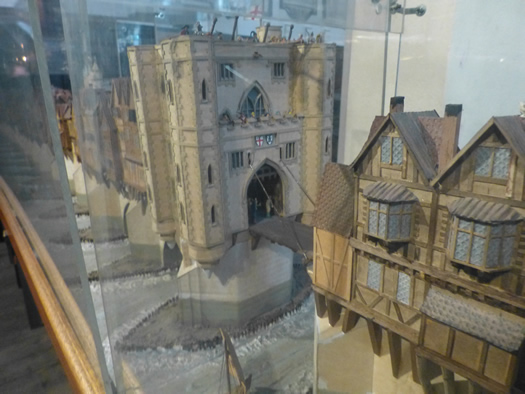
The bridge did suffer fire damage multiple times and the buildings on top probably changed quite often and needed to be replaced when the archways became too weak due to the load on the bridge, but London Bridge was not damaged in the Great Fire of 1666.
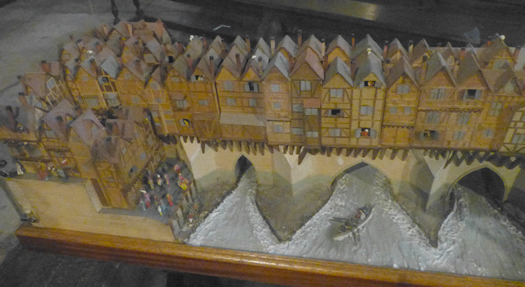
In Tudor times, over 200 buildings were on the bridge, and some of these were seven stories high and overhung the bridge by seven feet and the road, creating a dark tunnel for traffic to pass. The result was that the roadway was only 12 feet wide and divided into two lanes that were used simultaneously by carriages, horses, livestock, and pedestrians. When it was busy, it could take an hour to get from one side of the bridge to the other.
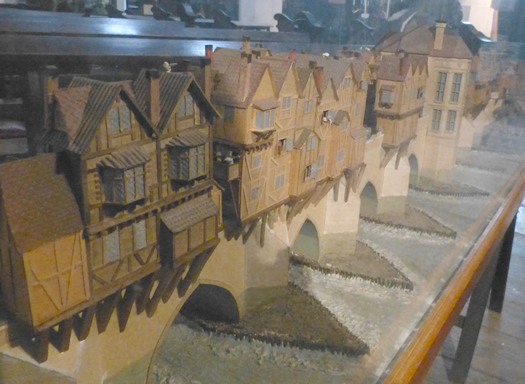
Scottish rebel William Wallace was the first man to have his head appear on the gatehouse in 1305, and placing the heads here became a tradition for nearly 400 years. Sometimes thirty or more heads would be placed up at a time.
In the mid-1700s, all buildings on the bridge were demolished, and the arches were rebuilt to improve the water flow under the bridge.
I would have loved to have seen the real London Bridge in its heydey, but like most of the old buildings and city walls/gatehouses and churches of old London, it has been lost to time.
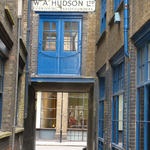
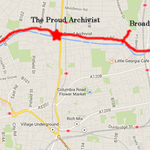

Leave a comment